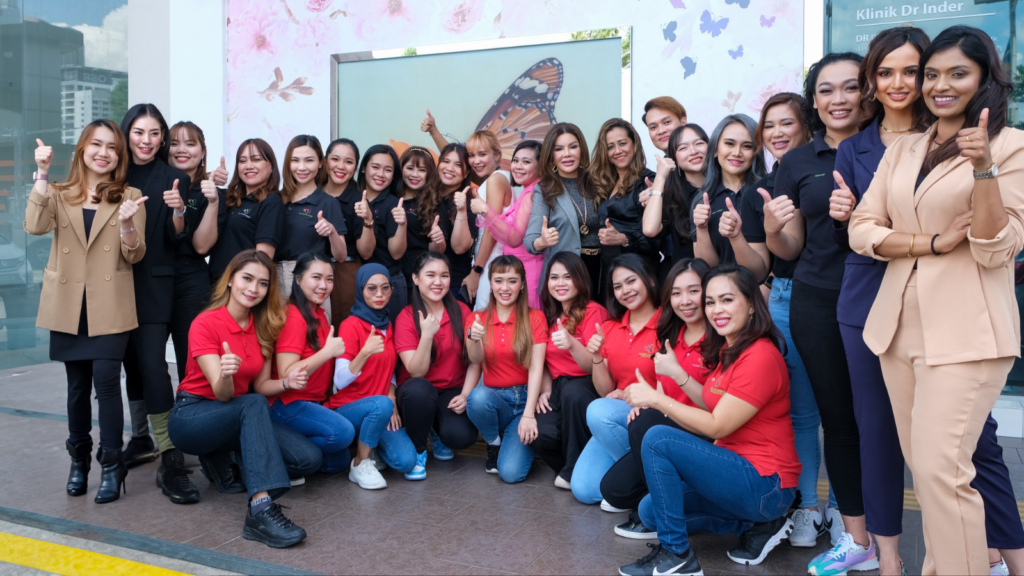
More moisture and hydration
Dry skin brought on by rosacea is fundamentally destroyed. Before it can recover, it has to be nourished with moisture and water. This has to do with how the skin acts as a barrier. It needs reconstruction.
However, you may need to avoid oily moisturisers if you have acne rosacea (which isn’t truly acne but produces pustules that mimic acne). Look for the terms “non-comedogenic” and “oil-free” on ingredient labels in these situations.
It’s crucial to keep in mind that dry skin and dehydrated skin are two distinct conditions in this regard. Both occlusive and humectant moisturisers have this characteristic. The latter adds or binds to water, whereas the former “locks in” water (sometimes with fat). Both of these categories of chemicals will be included in the majority of products marketed as “moisturisers.” On the other hand, serums may just include hydrators (also known as humectants). However, rosacea patients frequently require emollients in addition to occlusives and humectants.
There are various hydrating and moisturising compounds available, and many of them also serve other purposes (occlusives, for example, can also act as emollients).
Bacterial resistance
Rosacea is thought to result from an immunological response in the skin. As a result, medical professionals may recommend antibiotics to lessen its symptoms. Antibiotics that are provided are not intended to treat bacteria in this situation. Instead, they are employed to control the autoimmune responses that infections trigger. This idea may be used to search for components in over-the-counter goods that have antibacterial qualities.
Azelaic acid is a common antibacterial component used in the treatment of rosacea. Azelaic acid is available with a prescription. However, it is also sold over the counter and comes in smaller amounts.
The bacterium that causes acne and rosacea outbreaks is combated by azelaic acid. Additionally, it aids in exfoliation for phymatous rosacea, a scaly form of rosacea. As an anti-inflammatory, it also helps to relieve rosacea.
Anti-oil and anti-acne
Rosacea can occasionally appear as papulo-pustular rosacea. The common name for this is “acne rosacea.” But it’s not really acne, is it? Although it has an acne-like appearance, no whiteheads develop. Most of the fluid-filled lumps on the skin are pus.
But because it resembles acne so much, standard acne treatments can be used to dry up those pustules. Sulphur is the most typical treatment for pustules in rosacea. An alternative choice is sodium sulfacetamide. Sulphur can be found in several cleansers used to treat acne.
The trick is to avoid irritating the skin when using this chemical because it might dry up the skin’s natural oils. Avoid over-exfoliating (either with chemical or manual exfoliants) if your rosaceous skin is not oily. Keep in mind that you don’t want to aggravate dry skin further.
Sun-blocking minerals
Applying sunscreen often throughout the day is essential for addressing any skin issue. It is essential to emphasise this advice to people with rosacea (and melasma). Heat and UV rays may also cause rosacea. While various factors might cause rosacea in different people, there are many more reasons why you should limit your exposure to the sun. Remember that rosacea will already aggravate your skin, making it photosensitive and susceptible to sun damage. Sun-damaged skin can develop wrinkles, brown patches, and more, not to mention cancer!
No, there are primarily two types of sunscreens available on the market: chemical sunscreens and mineral sunscreens (often known as physical sunscreens or “sunblock”). Additionally, there are sunscreens that combine chemical and mineral sunblock.
Always use a high-quality, 100% mineral sunscreen if you have rosacea. Titanium dioxide and zinc oxide are both included in mineral sunscreens. Minerals do not penetrate the skin; they sit on top of it. This significantly reduces the likelihood of inflammation.
High-quality mineral sunscreens may also contain beneficial components that lessen inflammation and irritation. The same zinc oxide found in newborn diaper rash treatment may also be calming; it is a component of mineral sunscreen.







